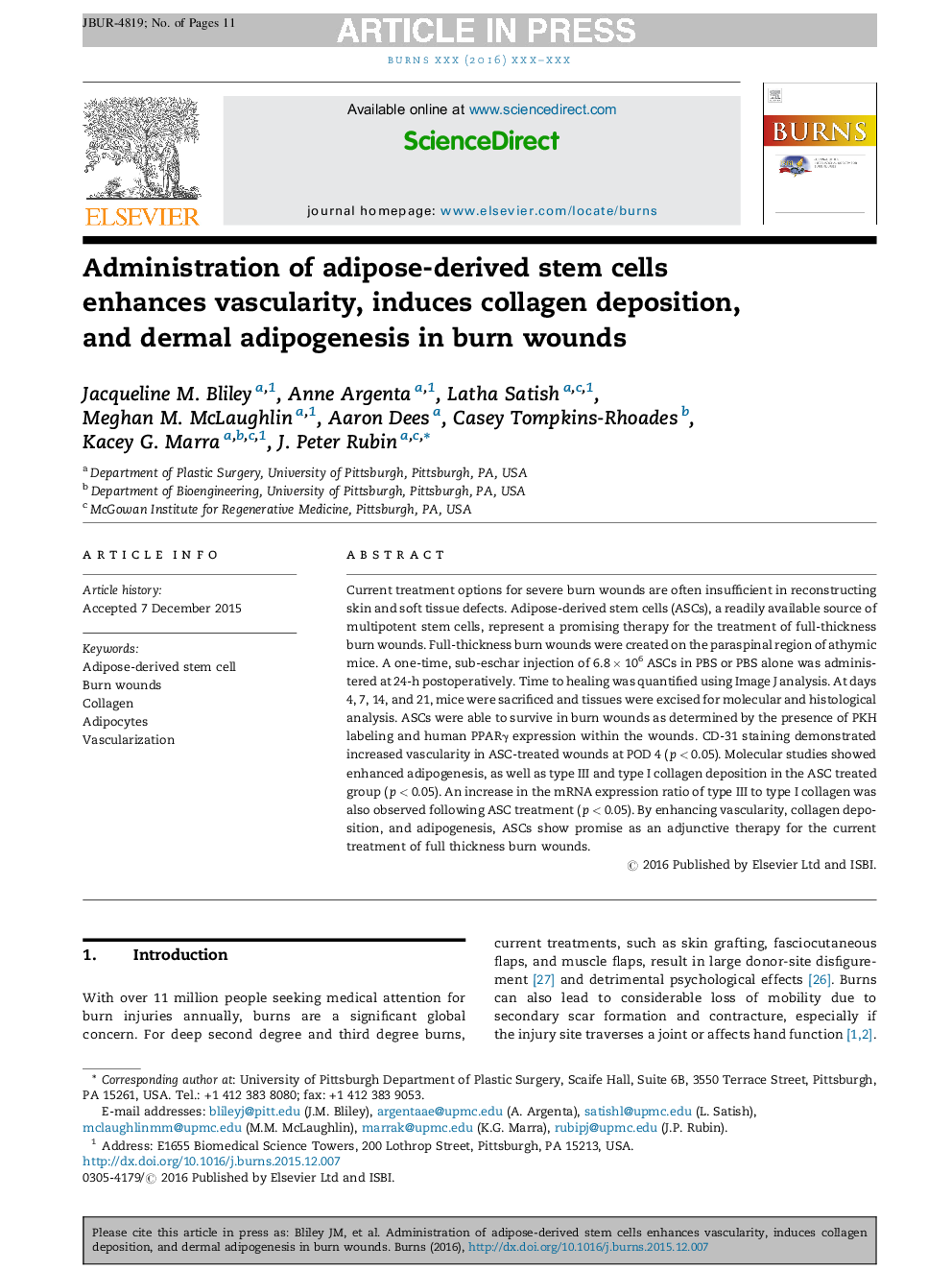| Article ID | Journal | Published Year | Pages | File Type |
|---|---|---|---|---|
| 5636325 | Burns | 2016 | 11 Pages |
Abstract
Current treatment options for severe burn wounds are often insufficient in reconstructing skin and soft tissue defects. Adipose-derived stem cells (ASCs), a readily available source of multipotent stem cells, represent a promising therapy for the treatment of full-thickness burn wounds. Full-thickness burn wounds were created on the paraspinal region of athymic mice. A one-time, sub-eschar injection of 6.8 Ã 106 ASCs in PBS or PBS alone was administered at 24-h postoperatively. Time to healing was quantified using Image J analysis. At days 4, 7, 14, and 21, mice were sacrificed and tissues were excised for molecular and histological analysis. ASCs were able to survive in burn wounds as determined by the presence of PKH labeling and human PPARγ expression within the wounds. CD-31 staining demonstrated increased vascularity in ASC-treated wounds at POD 4 (p < 0.05). Molecular studies showed enhanced adipogenesis, as well as type III and type I collagen deposition in the ASC treated group (p < 0.05). An increase in the mRNA expression ratio of type III to type I collagen was also observed following ASC treatment (p < 0.05). By enhancing vascularity, collagen deposition, and adipogenesis, ASCs show promise as an adjunctive therapy for the current treatment of full thickness burn wounds.
Related Topics
Health Sciences
Medicine and Dentistry
Critical Care and Intensive Care Medicine
Authors
Jacqueline M. Bliley, Anne Argenta, Latha Satish, Meghan M. McLaughlin, Aaron Dees, Casey Tompkins-Rhoades, Kacey G. Marra, J. Peter Rubin,
